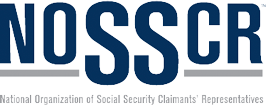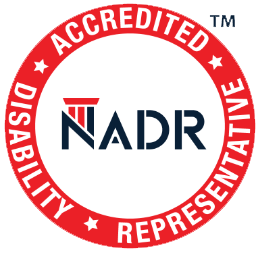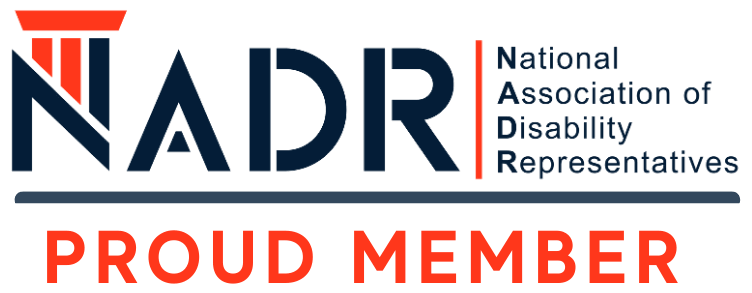How to Gather the Right Evidence for Your SSDI Application
Social Security Disability Insurance (SSDI) benefits provide a lifeline for those who develop long-term disabilities and can no longer work. Since you’ve paid into the system, you deserve access to these benefits if you qualify. However, the Social Security Administration (SSA) has strict eligibility requirements, and your SSDI application needs strong medical and work evidence to increase your chances of approval. Here’s what you need to know to build a solid claim.
Eligibility for SSDI Benefits
When you file for SSDI, the SSA reviews your application and the supporting evidence you provide. To qualify, you must meet two key criteria:
Work Credits
SSDI benefits are for individuals who have worked and paid into the Social Security system. To qualify, you need a minimum number of work credits, which are earned through taxable income.
You can earn up to four credits per year based on your income. In 2025, workers receive four credits if they earn at least $7,400 in eligible income.
The number of credits required depends on your age at the time of disability:
- Under 24 – Six credits earned in the preceding three years.
- Ages 24 to 31 – Credits for at least half of the years between age 21 and the age you became disabled.
- Ages 31 or Older – At least 20 credits earned in the last 10 years.
Having more than the minimum required credits won’t increase your benefits, but meeting the requirement is essential for eligibility.
NOTE: Once you have earned the required number of credits, you are considered insured. This insured status lasts for 10 years. To qualify for SSDI benefits, your disability must exist or begin within this timeframe. If it arises outside of this period, your claim will be denied for technical reasons.
Eligible Disability
Your condition must meet SSA’s definition of a disability:
- Lasts at least one year or is expected to result in death.
- Prevents you from performing your previous job or adjusting to new work.
- Prevents you from engaging in substantial gainful activity (SGA).
Even if you fully meet these requirements, strong supporting evidence is crucial to getting your application approved.
Gathering the Right Evidence for Your SSDI Application
The more detailed and organized your evidence, the stronger your case will be. The SSA will review your medical records, work history, and other supporting documents, so it’s important to provide as much documentation as possible.
Work History & Earnings Records
Your work history matters because it determines your work credits. You can check your work credits by obtaining your Social Security Statement from the SSA. One way to do this review is to visit the SSA website and log into your MySocialSecurity account. If there are discrepancies, submit W-2 or 1099 forms to correct any missing earnings.
Medical Evidence
Your SSDI application should include up-to-date medical records proving your condition meets SSA’s criteria. These may include:
- Diagnoses from treating physicians.
- Treatment history, including medications, therapies, and procedures.
- Test results, such as imaging scans, lab work, or functional assessments.
- Doctor’s notes detailing how your condition limits daily activities and ability to work.
If you’re still receiving treatment, submit the most recent records to reflect your current health status.
Tip: A doctor’s opinion alone isn’t enough to guarantee approval. Make sure your records include all supporting documentation, including lab tests and treatment details.
Proving Your Disability & Avoiding Common Pitfalls
To qualify for SSDI, you must prove that your disability prevents you from working. The SSA doesn’t automatically understand your job duties based on your job title, so providing clear evidence of your limitations is crucial.
Demonstrating Work Limitations
Your SSDI application should include documentation that explains how your condition impacts your ability to work. Supporting evidence may include:
- Personal Statement – A detailed explanation of how your condition affects your daily work activities.
- Letters from Employers or Coworkers – Observations of how your condition has affected your job performance.
- Functional Capacity Evaluations (FCEs) – Medical assessments measuring strength, endurance, and mobility limitations.
- Physical Therapy or Medical Evaluations – Documentation linking your symptoms to specific job-related challenges.
- The SSA also looks at your medical treatment history. Gaps in care can raise red flags, as SSA may assume your condition isn’t severe enough to prevent work if you haven’t been receiving consistent treatment.
Understanding Substantial Gainful Activity (SGA)
SSA evaluates whether you’re able to engage in Substantial Gainful Activity (SGA), meaning work that provides a certain level of monthly income. In 2025, the SGA limit is $1,620 per month. If you earn more than this, the SSA may determine that you are still capable of working and deny your claim.
You can still work while your SSDI application is pending as long as your earnings remain below the SGA threshold and the work performed is not considered substantial.
Common Mistakes That Can Lead to Denial
To strengthen your claim and reduce the risk of denial, avoid these common errors:
- Inconsistent Information – Ensure your medical records, work history, and statements align. Any discrepancies could lead to a denial.
- Missing Documentation – Each eligibility requirement must be fully supported with evidence. SSA may reject your claim if any key documents are missing.
- Gaps in Treatment – If your records show long periods without treatment, SSA may assume your condition isn’t as severe as claimed. Consistent medical care helps support your case.
Get Help with Your SSDI Claim
The SSDI application process can be complex and overwhelming, but you don’t have to go through it alone. At Disability Support Services, we specialize in helping people navigate this process and gather the right evidence to build a strong case. And remember—our team only gets paid when your claim is approved. Contact us today to learn how we can help you secure the benefits you deserve.



